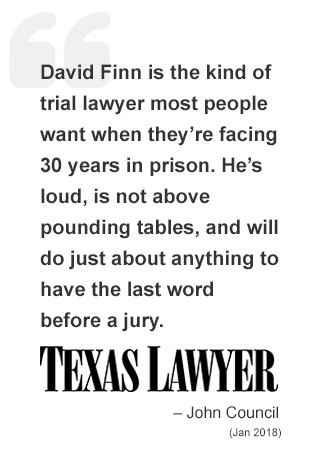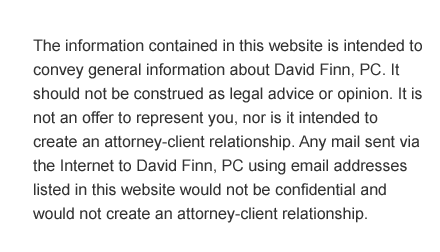


Texas FLDS Case
TEXAS COURT OF APPEALS, THIRD DISTRICT, AT AUSTIN
NO. 03-08-00235-CV
In re Sara Steed, et al.
ORIGINAL PROCEEDING FROM SCHLEICHER COUNTY
M E M O R A N D U M O P I N I O N
PER CURIAM
This original mandamus proceeding involves the temporary custody of a number of
children who were removed from their homes on an emergency basis from the Yearning For Zion ranch outside of Eldorado, Texas.1 The ranch is associated with the Fundamentalist Church of Jesus Christ of Latter-Day Saints (FLDS), and a number of families live there. Relators are thirty-eight women who were living at the ranch and had children taken into custody on an emergency basis by the Texas Department of Family and Protective Services based on allegations by the Department that
there was immediate danger to the physical health or safety of the children.
Relators seek a writ of mandamus requiring the district court to vacate its temporary
orders in which it named the Department the temporary sole managing conservator of their children. Because temporary orders in a suit affecting a parent-child relationship are not subject to interlocutory appeal under the family code, mandamus review is appropriate. Dancy v. Daggett, 815 S.W.2d 548, 549 (Tex. 1991); In re Vernor, 94 S.W.3d 201, 210 (Tex. App.âAustin 2002,orig. proceeding).
Section 262.201 provides, in relevant part, as follows:
(a) Unless the child has already been returned to the parent, managing conservator,
possessory conservator, guardian, caretaker, or custodian entitled to possession and
the temporary order, if any, has been dissolved, a full adversary hearing shall be held not later than the 14th day after the date the child was taken into possession by the governmental entity.
Relators complain that the Department failed to meet its burden under section 262.201
of the Texas Family Code to demonstrate (1) that there was a danger to the physical health or safety of their children, (2) that there was an urgent need for protection of the children that required the immediate removal of the children from their parents, or (3) that the Department made reasonable efforts to eliminate or prevent the childrenâs removal from their parents. Tex. Fam. Code Ann.
§ 262.201 (West Supp. 2007). Without such proof, Relators argue, the district court was required to return the children to their parents and abused its discretion by failing to do so.
Removing children from their homes and parents on an emergency basis before fully
litigating the issue of whether the parents should continue to have custody of the children is an extreme measure. It is, unfortunately, sometimes necessary for the protection of the children involved.
However, it is a step that the legislature has provided may be taken only when the circumstances indicate a danger to the physical health and welfare of the children and the need for protection of the children is so urgent that immediate removal of the children from the home is necessary. Section 262.201 further requires the Department, when it has taken children into custody (b) At the conclusion of the full adversary hearing, the court shall order the return of the child to the parent, managing conservator, possessory conservator, guardian,caretaker, or custodian entitled to possession unless the court finds sufficient
evidence to satisfy a person of ordinary prudence and caution that:
(1) there was a danger to the physical health or safety of the child
which was caused by an act or failure to act of the person entitled to
possession and for the child to remain in the home is contrary to the
welfare of the child;
(2) the urgent need for protection required the immediate removal of
the child and reasonable efforts, consistent with the circumstances
and providing for the safety of the child, were made to eliminate or
prevent the childâs removal; and
(3) reasonable efforts have been made to enable the child to return
home, but there is a substantial risk of a continuing danger if the child
is returned home.
. . . .
In determining whether there is a continuing danger to the physical health or
safety of the child, the court may consider whether the household to which the child
would be returned includes a person who:
(1) has abused or neglected another child in a manner that caused
serious injury to or the death of the other child; or
(2) has sexually abused another child.
Tex. Fam. Code Ann. § 262.201 (West Supp. 2007).
In this case, the Department relied on the following evidence with respect to
the children taken into custody from the Yearning For Zion ranch to satisfy the requirements of section 262.201:
⢠Interviews with investigators revealed a pattern of girls reporting that âthere
was no age too young for girls to be married”;
⢠Twenty females living at the ranch had become pregnant between the ages of
thirteen and seventeen;
⢠Five of the twenty females identified as having become pregnant between the
ages of thirteen and seventeen are alleged to be minors, the other fifteen are
now adults;
⢠Of the five minors who became pregnant, four are seventeen and one is
sixteen, and all five are alleged to have become pregnant at the age of fifteen
or sixteen;
⢠The Departmentâs lead investigator was of the opinion that due to the
âpervasive belief systemâ? of the FLDS, the male children are groomed to be
perpetrators of sexual abuse and the girls are raised to be victims of sexual
abuse;
⢠All 468 children were removed from the ranch under the theory that the
ranch community was âessentially one household comprised of extended
family subgroupsâ? with a single, common belief system and there was reason
to believe that a child had been sexually abused in the ranch âhouseholdâ?;
⢠Department witnesses expressed the opinion that there is a âpervasive belief
systemâ? among the residents of the ranch that it is acceptable for girls to
marry, engage in sex, and bear children as soon as they reach puberty, and
that this âpervasive belief systemâ? poses a danger to the children.
In addition, the record demonstrates the following facts, which are undisputed by
the Department:
⢠The only danger to the male children or the female children who had not
reached puberty identified by the Department was the Departmentâs assertion
that the âpervasive belief systemâ? of the FLDS community groomed the
males to be perpetrators of sexual abuse later in life and taught the girls to
submit to sexual abuse after reaching puberty;
⢠There was no evidence that the male children, or the female children who had
not reached puberty, were victims of sexual or other physical abuse or in
danger of being victims of sexual or other physical abuse;
⢠While there was evidence that twenty females had become pregnant between
the ages of thirteen and seventeen, there was no evidence regarding the
marital status of these girls when they became pregnant or the circumstances
under which they became pregnant other than the general allegation that the
girls were living in an FLDS community with a belief system that condoned
underage marriage and sex;
⢠There was no evidence that any of the female children other than the five
identified as having become pregnant between the ages of fifteen and
seventeen were victims or potential victims of sexual or other physical abuse;
⢠With the exception of the five female children identified as having become
pregnant between the ages of fifteen and seventeen, there was no evidence of
any physical abuse or harm to any other child;
⢠The Relators have identified their children among the 468 taken into custody
by the Department, and none of the Relatorsâ children are among the five the
Department has identified as being pregnant minors; and
⢠The Department conceded at the hearing that teenage pregnancy, by itself, is
not a reason to remove children from their home and parents, but took the
position that immediate removal was necessary in this case because âthere is
a mindset that even the young girls report that they will marry at whatever
age, and that itâs the highest blessing they can have to have children.â?
The Department argues that the fact that there are five minor females living in the
ranch community who became pregnant at ages fifteen and sixteen together with the FLDS belief system condoning underage marriage and pregnancy indicates that there is a danger to all of the children that warrants their immediate removal from their homes and parents, and that the need for protection of the children is urgent.
The Department also argues that the âhouseholdâ? to which the
children would be returned includes persons who have sexually abused another child, because the entire Yearning For Zion ranch community is a âhousehold.â? See id. § 262.201(d)(2).
The Department failed to carry its burden with respect to the requirements of section
262.201(b). Pursuant to section 262.201(b)(1), the danger must be to the physical health or safety of the child. The Department did not present any evidence of danger to the physical health or safety.
The Departmentâs witnesses conceded that there are differences of opinion among the
FLDS community as to what is an appropriate age to marry, how many spouses to have, and when to start having childrenâmuch as there are differences of opinion regarding the details of religious doctrine among other religious groups.
The notion that the entire ranch community constitutes a âhouseholdâ? as contemplated by section 262.201 and justifies removing all children from the ranch community if there even is one incident of suspected child sexual abuse is contrary to the evidence.
Nor did the Department offer any evidence that any of Relatorsâ pubescent female children were in physical danger other than that those children live at the ranch among a group of people who have a âpervasive system of beliefâ? that condones polygamous marriage and underage females having children.
The existence of the FLDS belief system as described by the Departmentâs witnesses, by itself, does not put children of FLDS parents in physical danger. It is the imposition of certain alleged tenets of that system on specific individuals that may put them in physical danger.
The Department failed to offer any evidence that any of the pubescent female children of the Relators were in such physical danger.
The record is silent as to whether the Relators or anyone in their households are likely to subject their pubescent female children to underage marriage or sex. The record is also silent as to how many of Relatorsâ children are pubescent females and whether there is any risk to them other than that they live in a community where there is a âpervasive belief systemâ? that condones marriage and childrearing
as soon as females reach puberty.
The Department also failed to establish that the need for protection of the Relatorsâ
children was urgent and required immediate removal of the children. As previously noted, none of the identified minors who are or have been pregnant are children of Relators.
There is no evidence that any of the five pregnant minors live in the same household as the Relatorsâ children. While there was evidence that the living arrangements on the ranch are more communal than most typical neighborhoods, the evidence was not legally or factually sufficient to support a theory that the entire ranch community was a âhouseholdâ? under section 262.201.
The simple fact, conceded by the Department, that not all FLDS families are polygamous or allow their female children to marry as minors demonstrates the danger of removing children from their homes based on the broad-brush ascription of every aspect of a belief system to every person living among followers of the belief system or professing to follow the belief system.
There is no evidence that Relators have allowed or are going to allow any of their minor female children to be subjected to any sexual or physical abuse. There is simply no evidence specific to Relatorsâchildren at all except that they exist, they were taken into custody at the Yearning For Zion ranch, and they are living with people who share a âpervasive belief systemâ? that condones underage
marriage and underage pregnancy.
Even if one views the FLDS belief system as creating a danger of sexual abuse by grooming boys to be perpetrators of sexual abuse and raising girls to be victims
of sexual abuse as the Department contends,11 there is no evidence that this danger is âimmediateâ? or âurgentâ? as contemplated by section 262.201 with respect to every child in the community.
The legislature has required that there be evidence to support a finding that there is a danger to the physical health or safety of the children in question and that the need for protection is urgent and warrants immediate removal. Id. § 262.201(b).
Evidence that children raised in this particular environment may someday have their physical health and safety threatened is not evidence that the danger is imminent enough to warrant invoking the extreme measure of immediate removal prior
to full litigation of the issue as required by section 262.201.
Finally, there was no evidence that the Department made reasonable efforts to
eliminate or prevent the removal of any of Relatorsâ children.
Phone Numbers
Office: (214) 538-6629







